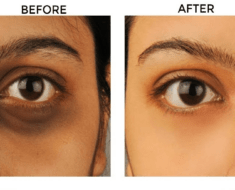
You may be suffering from hormone imbalance and not even know it. Some of the most common signs and symptoms that your hormones may be off balance are:
- Anxiety
- Depression
- Poor sleep patterns
- Digestive problems
- Weight gain
- Constant hunger
- Trouble losing weight
If you’re experiencing these symptoms, your hormones may be off, and they’re throwing the rest of you off, too.
One of the most common causes of hormone imbalance is stress, and it’s even commonly referred to as a silent killer. In fact, a 2014 U.S. study found that 77% of Americans regularly experience physical symptoms caused by stress.
Aside from the chronic symptoms listed above, stress has also been shown to cause high blood pressure, stroke, and even heart attacks.
Since your health is the most important part of your life, it’s crucial you learn to manage your stress and rebalance your hormones.
One of the easiest ways to do so is through practicing yoga, and these restorative yoga poses will set you on the right track.
What Are Hormones?
But first, lets talk about what hormones actually are.
Hormones are chemical messengers that help the body’s cells and organs communicate with each other.
The endocrine system is what’s in charge of creating and dispersing hormones throughout the rest of the body. More specifically, there are glands in the endocrine system that create and house hormones.
Hormones play an important role in your growth, metabolism, mood, immune system, reproductive health, sleep, among many other things.
So you’re probably wondering how yoga plays a role in this complex chemical system. It’s actually pretty simple.
In yoga, you’re twisting and contorting your body in different poses and as a result, you’re adding and relieving pressure in specific glands. These gentle compressions and decompressions help regulate hormone secretions, aka they help balance your hormones.
An added bonus is the stress-relief that yoga brings, since it’s so calming and relaxing, allowing you to let go of anything that’s bugging you so you can achieve total relaxation.
All the more reason to give yoga a try!
5 Restorative Yoga Poses to Balance Hormones
Often times, restorative yoga poses are held for 5 to 8 minutes and sometimes up to 10 so you can get the full effect of each pose.
To relieve discomfort, props such as yoga blocks and folded blankets are used.
If you’re new to yoga, holding a pose for more than a few minutes can be challenging, so only do what your body is capable of. Now let’s get your hormones back to normal with these 5 restorative yoga poses!
For more yoga fun, check out:
- Top 10 Fat Blasting Yoga Workout Videos for Fun Weight Loss
- 9 Amazing Yoga YouTube Channels for Free Yoga Workouts
- Top 10 Yoga Poses You Should Do Every Day
- 5 Minute Beginner Yoga Routine to Wake You Up
Cobra Pose (Bhujangasana)
Practicing Cobra Pose opens the heart, relieving you of stress and tension while reducing anxiety.
This is because this pose massages the adrenal glands, which produces the adrenal hormones cortisol and aldosterone.
Functions of the adrenal glands include:
- Controlling blood sugar
- Regulating blood pressure
- Burning fat and protein
- Reacting to major stressors from illness or injury
Performing Cobra Pose:
Begin Cobra Pose by laying facedown on the floor. While stretching your legs back and placing the tops of your feet on the floor, place your hands directly below your shoulders.
Hugging your elbows to your sides, press your hands, thighs, and the tops of your feet into the floor. Now straighten your arms while slowly send your chest forward and up, keeping the back of your neck long.
Broaden your collarbones while rolling your shoulders back and down.
Hold this pose for up to one minute before slowly lowering back down to the ground. Repeat Cobra Pose 5 to 8 more times to really experience its benefits.
If necessary, you can add a rolled up blanket right under your stomach for added support.
Camel Pose (Ustrasana)
Camel Pose is the inverse of Rabbit Pose and has many benefits, one of which is regulating hormones, making it the perfect restorative yoga pose.
Holding this pose works to stimulate your internal organs, more particularly in your neck region. This pose particularly helps stimulate the thyroid and parathyroid due to their location in the neck/throat area.
Performing Camel Pose:
Begin kneeling on the floor with your knees hip-width apart. You may want to add a blanket under your knees for comfort.
Place your hands on your hips with your thumbs at the base of your spine. While rotating your thighs inward, press your shins and the tops of your feet into the floor. Make sure you don’t squeeze your glutes.
Using your hands, gently push your tailbone down while sending your thighs backward to prevent you from moving forward. Inhaling, engage your abdominal muscles and reach your tailbone toward your knees.
On another inhalation, lift your chest and move your elbows toward each other so that your rib cage can expand.
With your chest raised, core engaged, spine long, and chin tucked, bring your hands to your heels. Press your palms into your heels while lifting through your sternum. Next, raise your shoulders so your trapezius muscles (located between the shoulder blades) rise up.
Slowly and carefully lower your head and neck so you can see the tip of your nose.
Stay in this pose for 30 seconds to 1 minute, repeating the pose 5 to 8 more times.
To exit Camel Pose, slowly bring your chin toward your chest and place your hands on your hips, thumbs at the base of your spine. Engaging your core, use your hands to support your lower back while coming up slowly.
Legs Up the Wall (Viparita Karani)
Legs Up the Wall Pose is basically the Holy Grail of yoga poses, so it’s a no-brainer it’s one of the five best restorative yoga poses to balance hormones.
Thought to be the cure for any ailment, Legs Up the Wall Pose:
- Reverses gravity’s effect on the body
- Helps redirect blood flow to internal organs (especially the adrenal glands)
- Allows the body to fully relax
Performing Legs Up the Wall Pose:
Start by placing a folded blanket near the wall and situate yourself, sitting, next to it.
Move into a laying down position with your butt against the wall and the back of your legs resting against the wall.
Position the blanket so it’s under the arch of your back, leaving a little gap between the blanket and wall so there’s space for your hip sockets to drop into.
If you can’t place your legs comfortably straight up the wall, you can bend your knees slightly. You can place your arms at your sides, on your chest, or wherever feels most comfortable.
Stay in this pose for 5-10 minutes.
Rabbit Pose (Sasangasana)
Forward bending poses like Rabbit Pose and Child’s Pose are particularly good at stimulating the kidneys, pancreas, thyroid and parathyroid glands, and thymus.
If you’re new to yoga, this yoga video from Yoga with Adriene will walk you through proper stretching and warmup techniques to help you get into Rabbit Pose comfortably.
Performing Rabbit Pose:
The best way to begin Rabbit Pose is by sitting on your heels in Hero Pose. Carefully reaching your arms back, grab onto the soles of your feet. Tuck your chin in towards your chest while rounding your body forward and hinging at your hips.
You should find yourself in a position with your head close to the floor and your forehead touching your knees.
To get more depth, slightly lift your hips up and allow the crown of your head to rest gently on the floor.
Hold this pose for 1 minute and slowly release back up to Hero Pose. Repeat 5 to 8 more times for the full effect.
Corpse Pose (Savasana)
Savasana is the last of these restorative yoga poses and is one of the best poses to relieve stress.
The goal is to completely let go of anything and everything so you can calm your brain and reduce stress and anxiety. In doing so, you’ll feel completely relaxed and relieved, allowing your hormones to rebalance.
Performing Corpse Pose:
Laying supine on the floor, rotate your shoulders back and down and rest your arms beside you. The goal is to relax all your muscles so you can reach total relaxation.
Stay in this pose for 5-10 minutes. For added comfort, you can place a folded blanket under your knees.
The great thing about yoga is it’s natural ability to alleviate ailments. These restorative yoga poses can be practiced as much as you need to reduce stress and rebalance your hormones.





